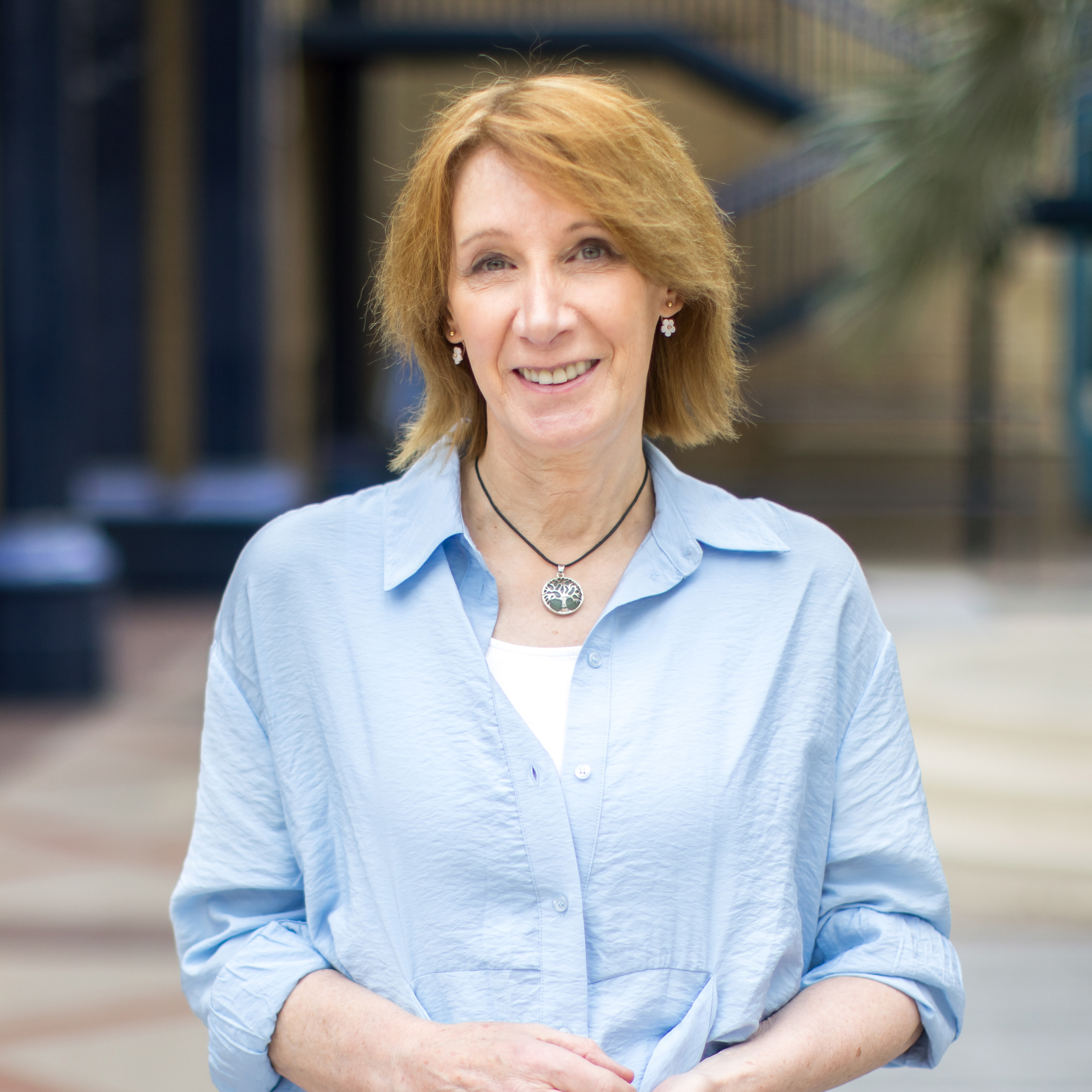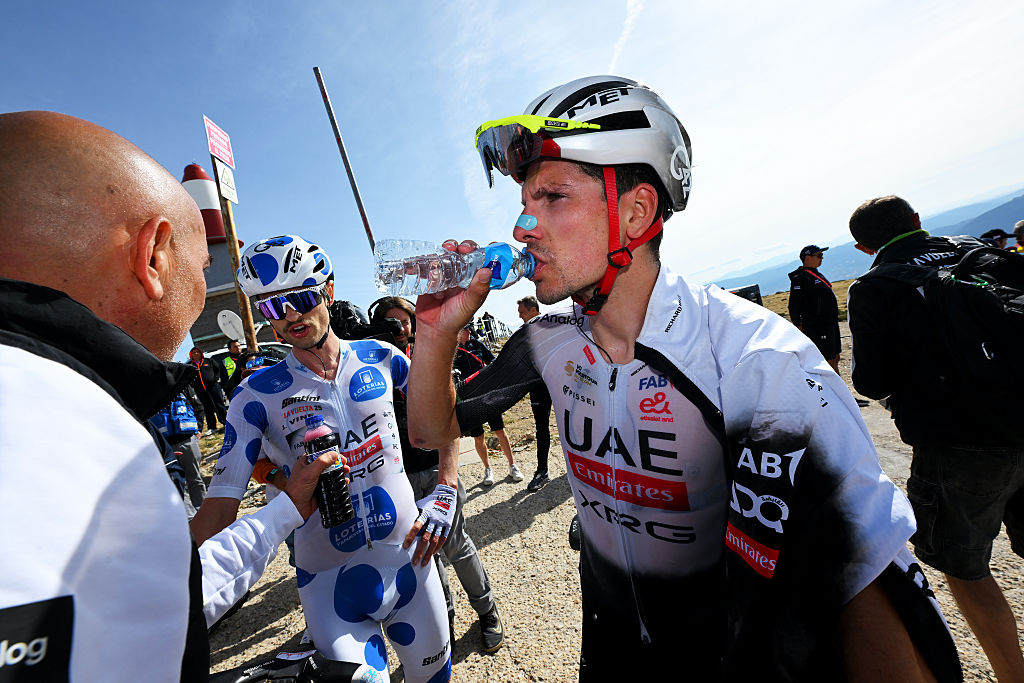Two good, two bad, too late – Philippa York analyses the tactical miscalculations of the key stages of the 2025 Tour de France
From a masterclass on Ventoux to mismanagement on the queen stage, Philippa York takes a deep dive into the decisions that gifted Pogačar his vast margin.
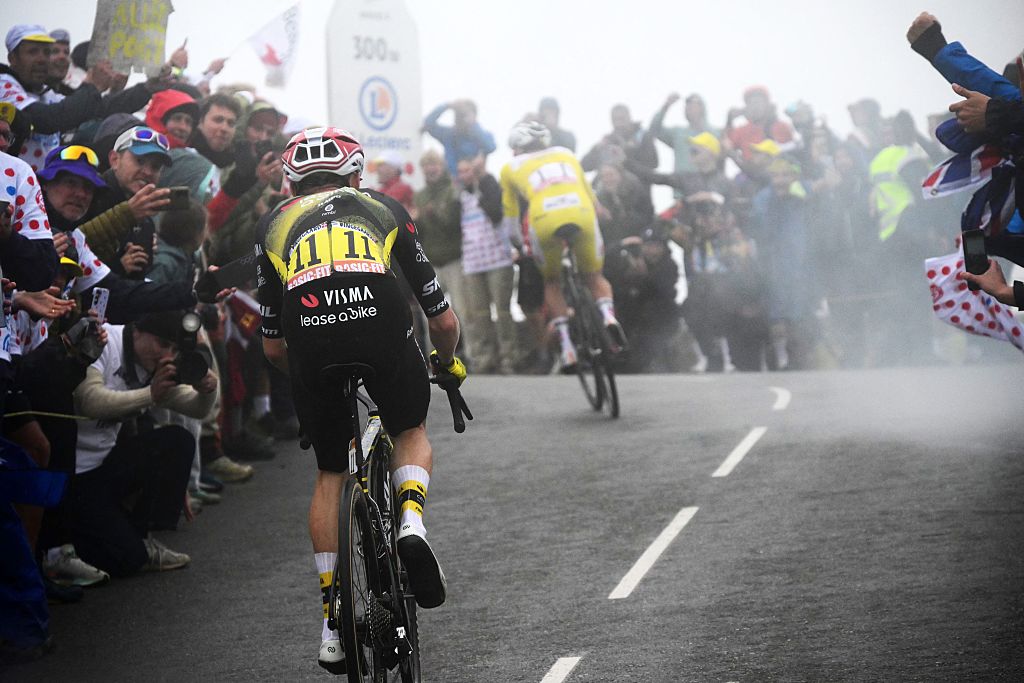
The third week of any Grand Tour is always intriguing.
The race scenarios and tactics become more and more focused as the riders become more fatigued and irritable. Each stage is another opportunity to salvage some kind of a result for those who have been invisible.
On Mont Ventoux, Team Visma–Lease a Bike got their tactics at the Tour de France absolutely spot on. Wout van Aert, Victor Campenaerts, Simon Yates and Sepp Kuss laid down the foundations for the attack that everyone knew was coming from Jonas Vingegaard.
It was impressive to watch as they followed the plan, and it was obvious they had all done their homework on where they could be most effective. There are two spots on that ascent which lend themselves to a big acceleration that very few can even contemplate, and Jonas duly obliged.
The first of those is just under four kilometres from Chalet Reynard and requires a long period out of the saddle to maintain the effort. The second, about one kilometre from Chalet Reynard, is the section where the gradient steepens again after the Chalet Reynard false flat. Each of those moments hurts in different ways, but those are the places where the race is potentially decided. Once out of the trees with the summit in view, the wind can influence proceedings, so best not to wait if you feel strong.
Vingegaard nailed each attack. He had the right gearing, led into each point beautifully and went fast enough to blow everyone away. Except for Tadej Pogačar (UAE Team Emirates-XRG), that is.
Admittedly, the first attack hurt the Slovenian, so the next attack was worth doing just in case the yellow jersey hadn’t recovered. He had but Jonas was back climbing at his best, and morale must have been up.
The latest race content, interviews, features, reviews and expert buying guides, direct to your inbox!
The tactical execution was without fault, and if Pogačar hadn’t been up to the task, then his morale and time gap would have taken a beating.
Back in the battle for the third spot in the general classification, Red Bull-Bora-Hansgrohe had stayed well out of the way of the two best riders and concentrated on distancing Oscar Onley (Team Picnic PostNL) by firing off Primož Roglič (Red Bull-Bora-Hansgrohe) and Florian Lipowitz (Red Bull-Bora-Hansgrohe), going nearly forty seconds clear in the process.
The white jersey wearer moved two minutes clear of the young Scot, and Roglič showed signs that he had sights on moving up and over the Team Picnic PostNL rider too.
Dissecting stage 18
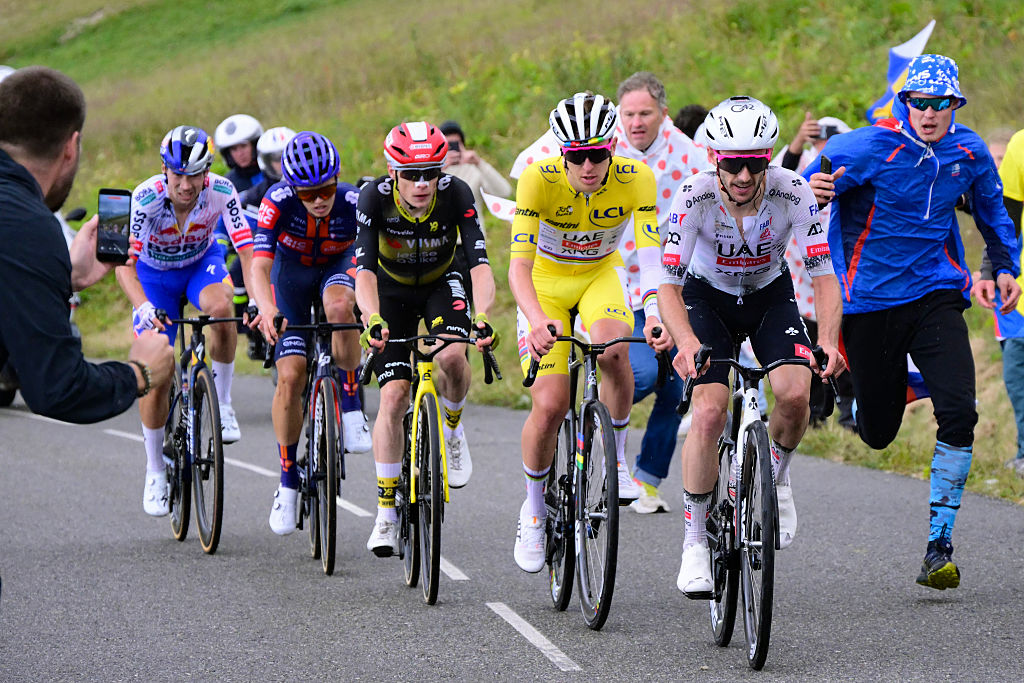
Stage 18, the big Alpine day out up to the summit of the Col de la Loze, looked good for both Visma–Lease a Bike and Red Bull-Bora-Hansgrohe at one point There was a real sense that something was about to happen on the earlier climbs.
It would be hard for Vingegaard to distance Pogačar but there was no reason not to try. Lipowitz and Roglič set-up the one-two tactic on Onley to hopefully profit from the Visma–Lease a Bike pace setting.
Both scenarios were from the standard section of the professional race craft manual. There was no reason to do anything much different because experience has shown both tactics are valid. Pogačar's response would reveal if they would work.
From the first climb, the Col de Glandon, things looked perfect. Roglič and Matteo Jorgenson (Visma–Lease a Bike) were in the break, meaning the pressure was on UAE Team Emirates-XRG to keep them under control. They did, allowing the usual three-minute-long leash.
Maybe that tight control was a slight mistake,but Pogačar had demons to exorcise from his 2023 visit to Col de la Loze. Given half a chance, if the gap wasn’t too big to the front, he would consider the possibility of another stage win.
UAE Team Emirates-XRG could have let the gap go out further and negate Jorgenson being useful to Vingegaard when he attacked, but they chose not to, probably because Onley and Kévin Vauquelin (Arkéa-B&B Hotels) were without enough support to take on the responsibility.
Onto the Col de la Madeleine and, as predicted, Visma–Lease a Bike deployed their resources and the race took a major step forward. When Vingegaard attacked, again perfectly set up, Pogačar followed, and very quickly they both went across to the front group.
The yellow jersey was isolated, just as Visma–Lease a Bike wanted. With Jorgenson to do the descent and hard graft in the valley to the bottom of Courchevel, they could prevent the return on any UAE Team Emirates-XRG support for Pogačar. Textbook scenario.
At Red Bull-Bora-Hansgrohe, Lipowitz tried to follow the top two and failed and was stuck in a windy no-man's land for the last third of the Madeleine. The team had two choices: Roglič waits for him on the descent and they likely come back taking a few risks, or the white jersey wearer sits up and waits for the Onley group, which has the UAE Team Emirates-XRG helpers in it. The latter might ride in the valley, hoping they can return to help Pogačar at the beginning of the final climb.
It was a decision for the DS in the Red Bull-Bora-Hansgrohe car to take, thus saving Lipowitz energy he would need later on Col de Loze. The worst thing they could do was leave Lipowitz to do all the descent and valley alone. If they don’t send Roglič back to help, then at a minimum, they need to talk with Team Ineos Grenadiers, who has Thymen Arensman (Ineos Grenadiers) just 15 to 20 seconds in front, also alone. It’s a long pedalling descent and it’s windy, so two will be better than both being on their own.
Red Bull-Bora-Hansgrohe made the wrong tactical choice and Roglič stays in the front group. Lipowitz struggled to catch Arensman and doesn’t wait for the Onley group.
Big mistake. He was spending energy he couldn't afford and Roglič was serving no purpose in front. Unless, of course, he sees himself overtaking the young German for that third podium place if he hangs on to Jonas and Tadej long enough.
The Unravelling
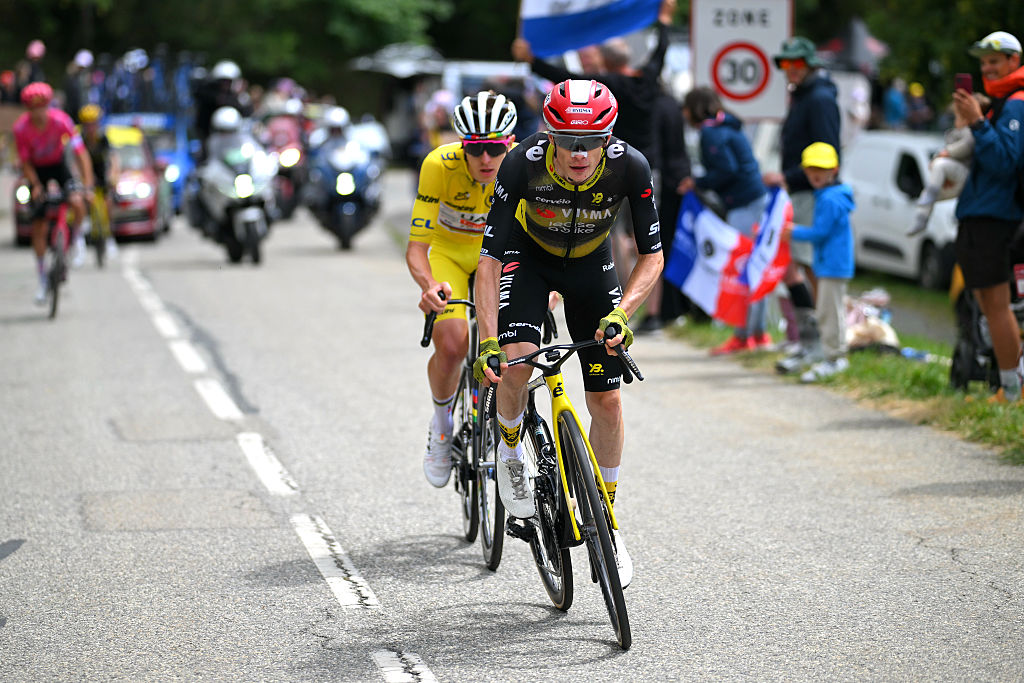
The next phase in the valley is where it all goes wrong for Visma–Lease a Bike.
Jorgenson has been on the front with almost no help, even though Felix Gall (Decathlon AG2R La Mondiale), Ben O’Connor (Jayco AlUla) and Einer Reyes (Movistar) could have been offered a few favours in exchange for a smidgen of assistance. The American was tired and at the end of his tether, so when Arensman and Lipowitz finally made it to the front again, all cohesion left the group. No one wanted to work.
O’Connor sensed that now was his chance, attacked and took Rubio and Jorgenson with him. Vingegaard looked at Pogačar, who looked at Gall, and they all sat up in a stalemate.
All except for Lipowitz, who made another error, and he set off on his own, even though he just got back and had spent too much energy already to be sure he’d survive the last climb.
Did he believe he would catch the three leaders, or was he thinking he needed a few minutes' head start before it all kicked off again on the way up to Courchevel and Col de Loze?
Whatever was going on, it was another mistake that the guys in the Red Bull team car needed to manage. Again, they apparently did nothing.
For the second group that included UAE domestiques Jhonatan Narváez and Adam Yates, the discord up front was a nice blessing, and they were back in the game in no time at all, changing the race strategies yet again.
Visma–Lease a Bike had used up their resources but now they had given free minutes away to the three in the lead and allowed UAE Team Emirates-XRG helpers back to pace Pogačar.
Cue more misery for Visma–Lease a Bike at the foot of the final climb as Jorgenson was dropped from the front immediately and was caught by the GC group now under the control of Narváez and Adam Yates for UAE Team Emirates-XRG.
They set a pace which stopped any chance of a long-range attack from Vingegaard and reeled in Lipowitz, who never looked likely to catch O’Connor and Rubio. Jorgenson was completely blown and in trouble.
Up front, O’Connor was alone, having attacked Rubio, and the Australian was holding the gap, which meant Pogačar’s hopes of winning were slim. He didn't test Vingegaard with an attack in case he is counter-attacked and exposed.
The main action on the Col de la Loze is by elimination – ejecting riders out of the back of the GC group. Gall is dropped and Roglič is swinging, so his hopes of a third place are gone. When Vingegaard eventually accelerated, Pogačar reacted straight away, but so did Oscar Onley.
Red Bull-Bora-Hansgrohe, at one point seemingly comfortable in third and maybe looking at fourth place, they finished in disarray.
Lipowitz suffered and lost vital time and now lead Onley by just 22 seconds. Roglič – after spending all day in front – fell back to the position he was in before Mont Ventoux.
They had messed up in a big way and it was their directeur sportif who had most of the responsibility. Roglič has some part in it as he ought to have waited for Lipowitz, but really, the German would have been best to stay in the second group on the Madeleine. He definitely sealed his own fate when he was on his own at the foot of Courchevel. What they were all thinking?
Visma–Lease a Bike tried to execute a plan and put pressure on Pogačar. It was going well until Jorgenson stopped riding, and they gave away free minutes.
That allowed the return of Adam Yates and Narváez. Then they made the assumption that Jonas was still good and paced the beginning of Courchevel before UAE Team Emirates-XRG took over.
Why did they let Jorgenson ride with Ben O’Connor and Rubio instead of ignoring the lack of co-operation and just ride to the final ascent when they had Pogačar isolated?
The final week of the Tour de France always sparks so many questions and so few answers.
The winners, losers, and the finale
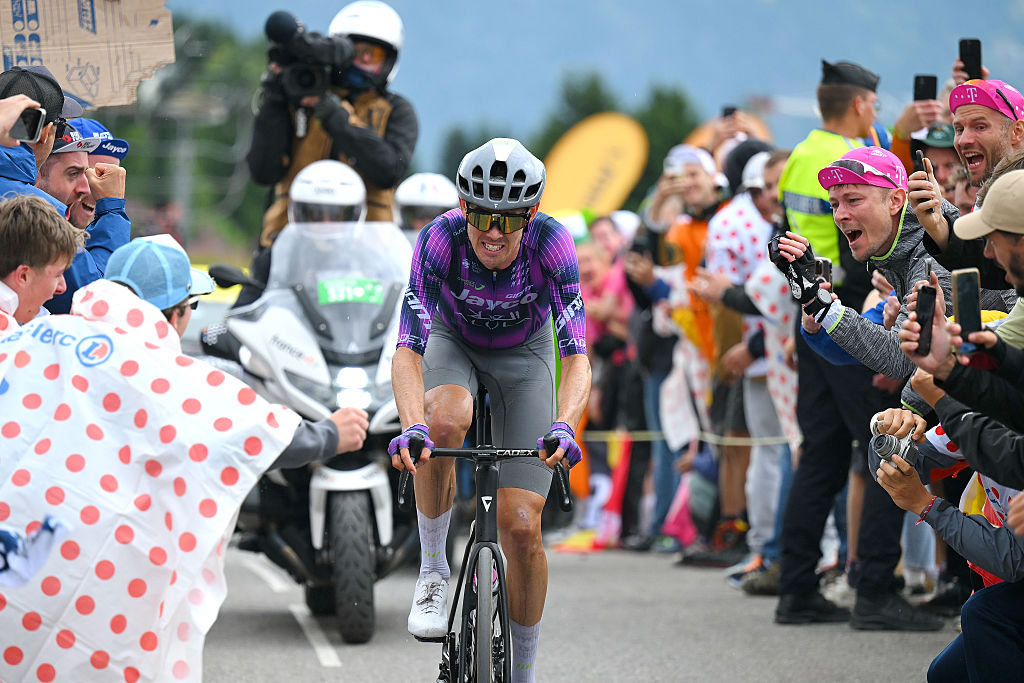
The real winners of the day were Picnic PostNL and Ben O’Connor, because they used their experience and resources when all else around them were panicking.
The Jayco AlUla rider stayed calm in the break and then attacked at the right time when he recognised what was happening. That he was strong enough to hold on to the finish showed a lot of power, determination and patience.
Now Oscar Onley can believe he has a real chance of that third podium spot in Paris, all because he stayed within his limits and didn’t panic when Vingegaard & Co went up the road.
As is often the case, cohesion in the front group between GC leaders fell apart, and with reinforcements arriving from behind gaps that looked unbridgeable can disappear in an instant. The Dutch squad recognised the situation wasn’t lost, and then Onley backed that up with a top performance on the final part of the Col de Loze.
With no Col des Saisies on the final day in the Alps on Friday, it is surely too late to dethrone Tadej Pogačar. Not that he would have struggled on the early climb but it was an opportunity for a break to form.
The Col du Pré is brutal, but there’ll probably be a regrouping over Cormet de Roselend, and then it comes down to a final battle on the long haul up to La Plagne.
Only a terrible day for Pogačar can reopen the battle for the yellow jersey, so I'll be watching the far more interesting fight for third place and the best young rider classification.
The Tour de France is the biggest race in cycling, and a Cyclingnews subscription offers you unlimited access to our unrivalled coverage. Get all the breaking news and analysis from our team on the ground in France, plus the latest pro tech, live race reports, and a daily subscriber-only newsletter with exclusive insight into the action. Find out more.
Philippa York is a long-standing Cyclingnews contributor, providing expert racing analysis. As one of the early British racers to take the plunge and relocate to France with the famed ACBB club in the 1980's, she was the inspiration for a generation of racing cyclists – and cycling fans – from the UK.
The Glaswegian gained a contract with Peugeot in 1980, making her Tour de France debut in 1983 and taking a solo win in Bagnères-de-Luchon in the Pyrenees, the mountain range which would prove a happy hunting ground throughout her Tour career.
The following year's race would prove to be one of her finest seasons, becoming the first rider from the UK to win the polka dot jersey at the Tour, whilst also becoming Britain's highest-ever placed GC finisher with 4th spot.
She finished runner-up at the Vuelta a España in 1985 and 1986, to Pedro Delgado and Álvaro Pino respectively, and at the Giro d'Italia in 1987. Stage race victories include the Volta a Catalunya (1985), Tour of Britain (1989) and Critérium du Dauphiné Libéré (1990). York retired from professional cycling as reigning British champion following the collapse of Le Groupement in 1995.
You must confirm your public display name before commenting
Please logout and then login again, you will then be prompted to enter your display name.
